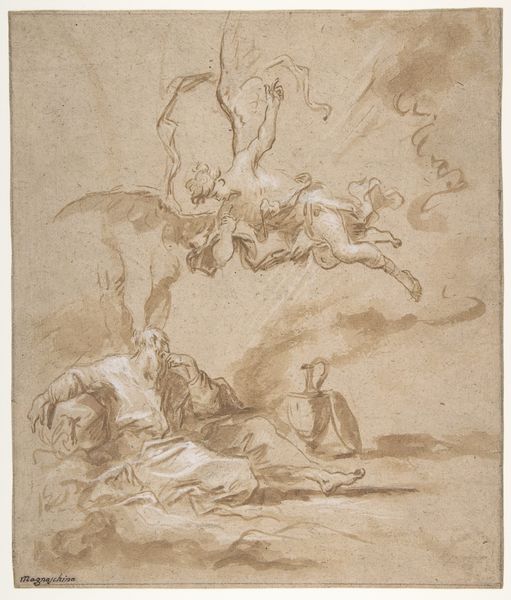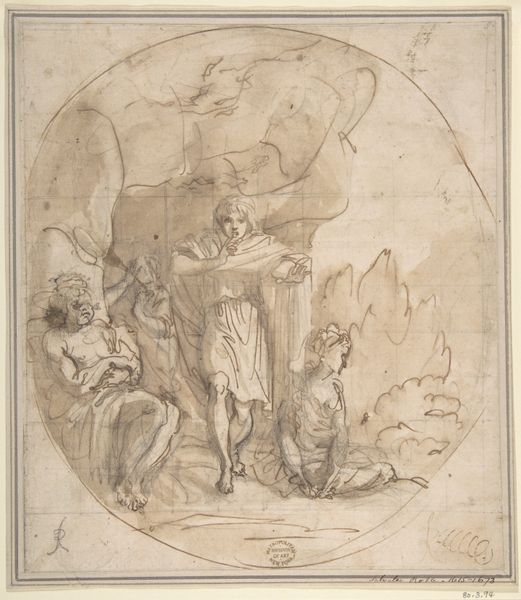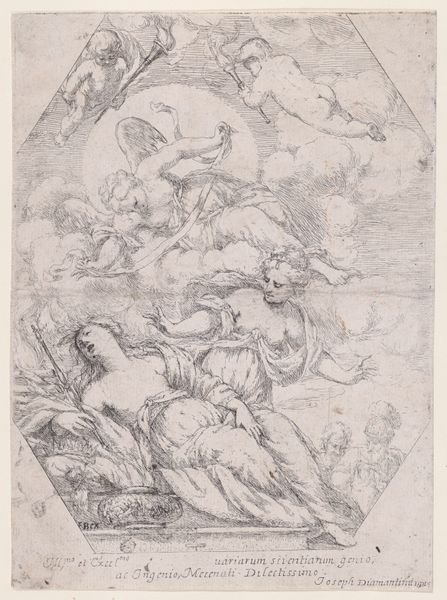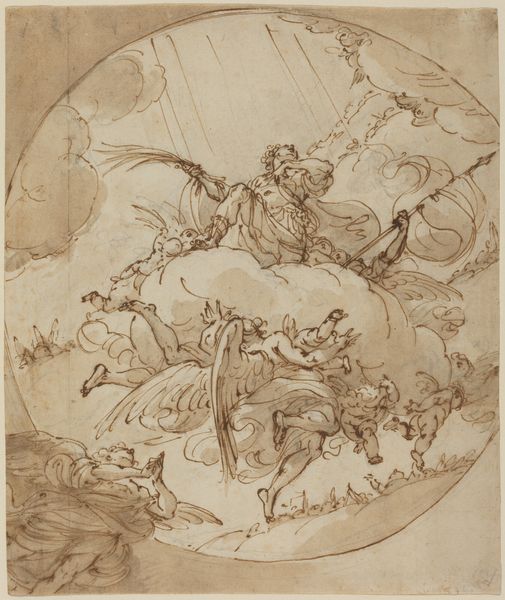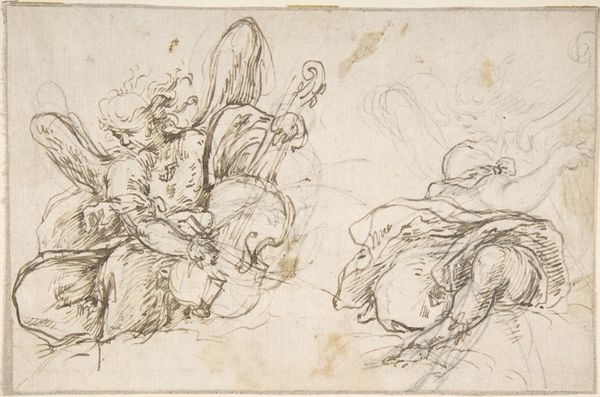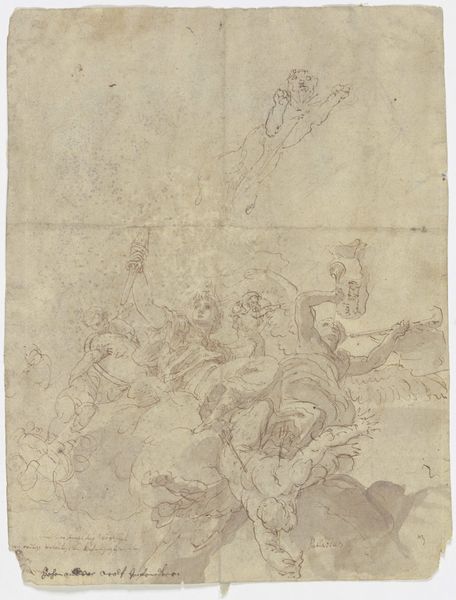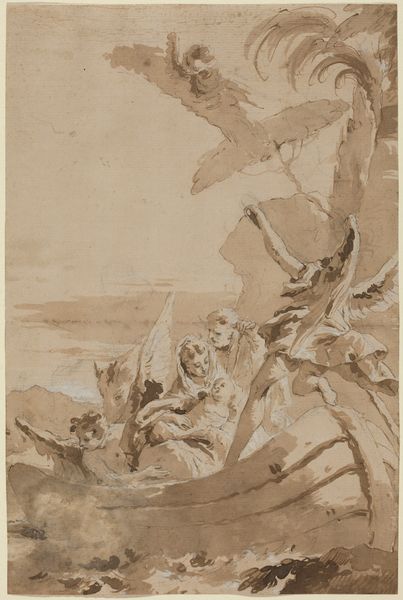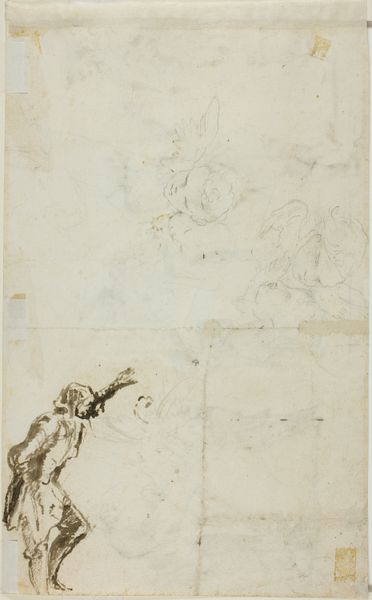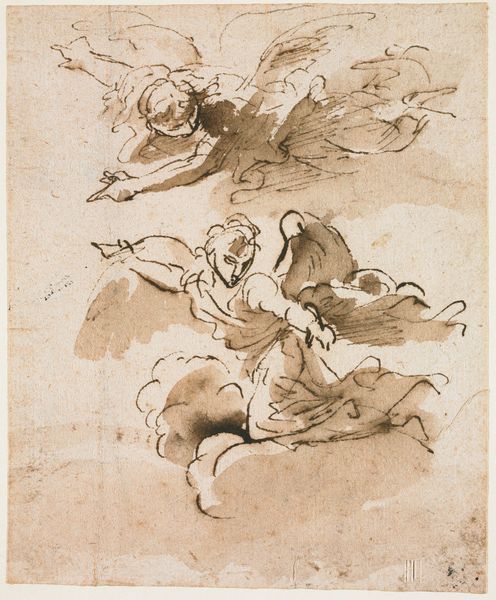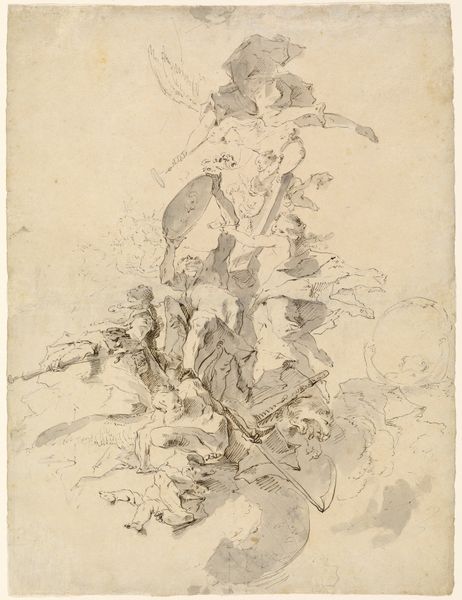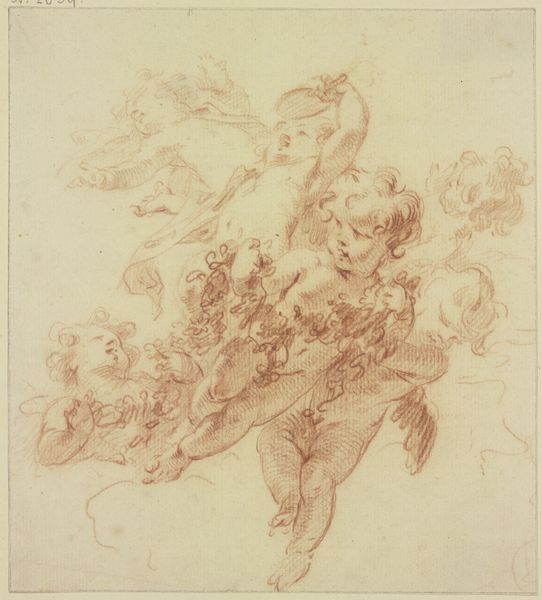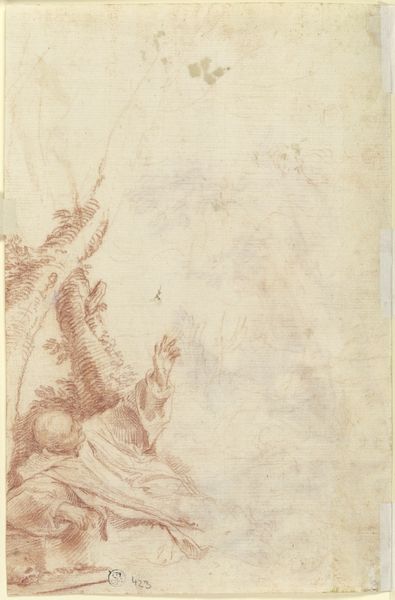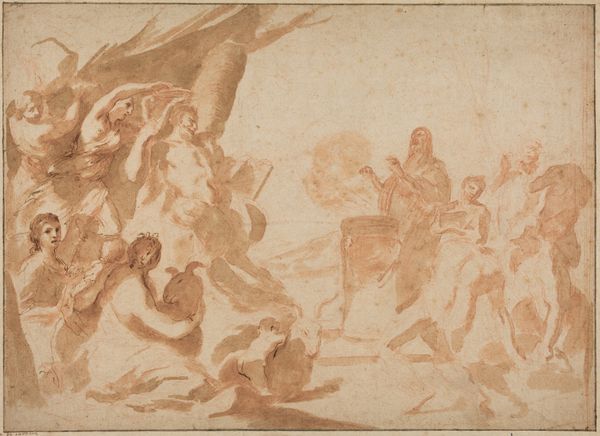
Saint in Ecstasy; Study of Saint's Head (recto); Sketches of Putti (verso) 1600 - 1700
0:00
0:00
drawing, paper, ink, pen
#
portrait
#
drawing
#
head
#
figuration
#
paper
#
11_renaissance
#
ink
#
pen
#
history-painting
Dimensions: 10-15/16 x 6-11/16 in. (27.8 x 17 cm)
Copyright: Public Domain
Curator: This is a drawing attributed to an anonymous artist working between 1600 and 1700, titled "Saint in Ecstasy; Study of Saint's Head (recto); Sketches of Putti (verso)." It’s executed in pen and ink on paper and held at the Metropolitan Museum of Art. Editor: Immediately, I’m struck by the lightness, the ethereal quality achieved with the delicate inkwork. It feels like a fleeting vision, not fully formed, capturing a moment of intense emotion. Curator: Precisely. Consider the technical process. The anonymous artist skillfully manipulates the ink, creating depth and drama. What we see in the Saint's upturned gaze, and the angel to her side is achieved through varying line weights and hatching. Notice the study of the saint's head in the upper part. The materiality itself, the humble paper and the readily available ink, grounds this spiritual depiction in the everyday. Editor: Yes, and those recurring motifs... the upturned eyes, the hand gestures – they create a visual vocabulary understood across cultures and time periods. They tap into a shared understanding of spiritual transcendence. The saint in ecstasy, a common theme, visually expresses devotion and a surrender to a higher power. The cherubic figures underscore innocence and divine blessing. Curator: And one can't dismiss the political climate driving that level of religious fervor either. Artists creating images promoting Counter-Reformation efforts in art may very well have labored under severe dictates controlling not only the types of materials available to work with, but also strict protocols of religious propaganda through the very subjects they portray. Consider what type of workshop could even afford quality paper such as this, and what those material restrictions imparted on how these devotional scenes are framed for consumers. Editor: Absolutely. The imagery used here, the very idea of a "saint in ecstasy", carries layers of cultural weight. It's not just about individual devotion; it is also representative of shared, culturally reinforced emotions and collective ideals that tap into cultural memory. It reflects a culture's longing for connection with the divine, mirrored throughout Renaissance art. Curator: The paper bears witness to revisions, process, pentimento: this adds another layer of social materiality to the historical moment through revealing stages in material development for workshop prototypes that, to this day, give insight into workshop practice. Editor: I leave this drawing now with a feeling of awe. Awe at a fleeting moment captured, reverence toward a devotional subject portrayed, and renewed interest in the artistic symbolism driving spiritual representation in the Renaissance period. Curator: Yes, the social and material histories surrounding this image reveal to me just how workshops functioned and innovated given finite constraints. It’s not just a drawing; it is physical artifact documenting an intersection of devotional practice and material ingenuity within particular workshop constraints during the Renaissance period.
Comments
No comments
Be the first to comment and join the conversation on the ultimate creative platform.
